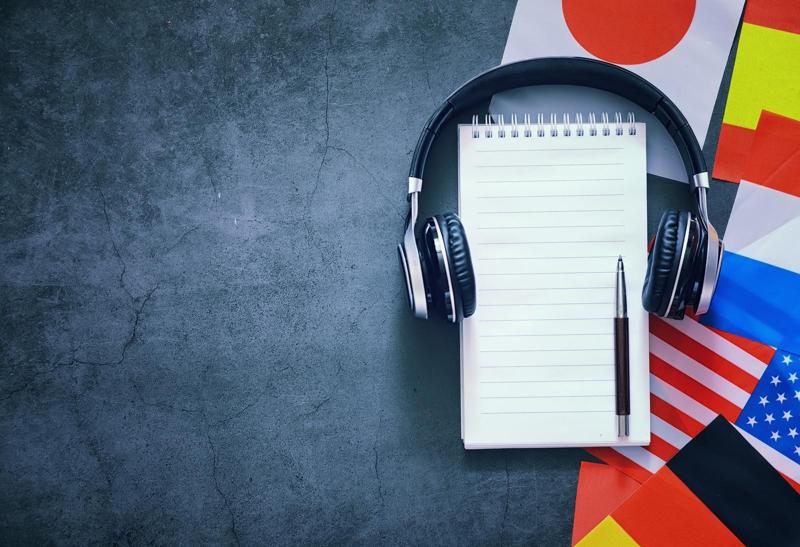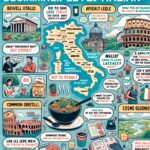When planning a trip to Italy, one of the best things you can do to enhance your experience is to learn to speak Italian for travel. Whether you want to immerse yourself in the local culture, connect with locals on a deeper level, or simply navigate the country with ease, being able to communicate in Italian will open up endless opportunities during your travels.
In this blog post, we will explore the importance of learning Italian for travel, provide valuable resources and tools for language learning, share essential phrases for travelers, delve into Italian language and culture, and offer tips for practicing Italian while abroad.
Learning Italian is not just about being able to ask for directions or order a coffee; it’s about immersing yourself in the rich cultural tapestry of Italy. Speaking the local language allows you to connect with locals in a more meaningful way and gain a deeper understanding of their traditions and way of life. By speaking Italian while traveling in Italy, you’ll be able to truly appreciate all that this beautiful country has to offer.
Throughout this blog post, we will provide you with all the information you need to start your journey toward speaking Italian fluently. We’ll share tips on finding reliable language learning tools and resources, teach you essential phrases for navigating Italy, offer insights into Italian language and culture, and provide strategies for practicing Italian while traveling.
By the end of this article, you’ll be well-equipped to embark on your next adventure in Italy with confidence and proficiency in the Italian language.
The Importance of Learning Italian for Travel
When planning a trip to Italy, learning the Italian language can greatly enhance your travel experience. Italian is not only the official language of the country, but it also plays a significant role in Italian culture and society.
By learning Italian, travelers can better connect with locals, navigate through different cities and regions, and gain a deeper understanding of the rich history and traditions of Italy. Whether you’re exploring the bustling streets of Rome, admiring the art in Florence, or relaxing along the Amalfi Coast, speaking Italian can open up new opportunities and foster meaningful interactions during your travels.
Italy is one of the most popular tourist destinations in the world, attracting millions of visitors each year. By speaking even just basic Italian phrases, travelers can show respect for the local culture and create positive experiences with Italians.
In addition to making travel more convenient and enjoyable, knowing Italian can help break down language barriers that may arise when communicating with locals who may not speak English fluently. Learning and using Italian during your travels demonstrates an appreciation for the country’s heritage and can lead to memorable encounters with people from all walks of life.
According to data from Statista.com, over 700 million tourists visited Italy in 2019 alone. This number has been steadily increasing over the years as more people discover Italy’s diverse attractions and rich cultural heritage. Many popular destinations in Italy such as Rome, Venice, Milan, and Tuscany are known for their historical significance and artistic achievements. Speaking Italian while exploring these places can provide a deeper connection to their significance while also making travel smoother and more enjoyable overall.
| Number of Tourists Visiting Italy (2019) | 700 million |
|---|
Tools and Resources for Learning Italian
Learning a new language can be an exciting and enriching experience, and finding the right tools and resources can make the process much easier. Fortunately, there are several options available for those looking to learn Italian for travel.
Language Learning Apps and Websites
There are numerous language learning apps and websites specifically designed to help users develop their Italian skills. Popular apps like Duolingo, Babbel, and Rosetta Stone offer comprehensive lessons in vocabulary, grammar, and pronunciation. These apps are convenient for practicing on the go and often incorporate interactive exercises to keep learners engaged. Additionally, websites such as FluentU and ItaliaRail provide access to a variety of resources including videos, articles, and language exchange opportunities.
Italian Language Courses and Classes
For those seeking a more structured approach to learning Italian, enrolling in a formal language course or class may be beneficial. Many community colleges and universities offer Italian courses for beginners as well as advanced learners. Private language schools in Italy also provide immersive programs that allow students to not only learn the language but also experience the culture firsthand.
Finding Language Exchange Partners
One effective way to practice speaking Italian is by finding language exchange partners. There are several online platforms dedicated to connecting individuals who want to learn each other’s languages. Through these exchanges, travelers can practice conversational Italian with native speakers while helping them improve their English skills in return. This method not only provides valuable real-world practice but also offers the chance to make new friends from different cultures.
By taking advantage of these tools and resources for learning Italian, travelers can prepare themselves for a more immersive and fulfilling experience when visiting Italy. Whether it’s through mobile apps, formal classes, or connecting with native speakers online, there are opportunities available for every type of learner.
Basic Italian Phrases for Travelers
When traveling in Italy, having a basic understanding of the Italian language can greatly enhance your experience. Whether you’re navigating the cities, ordering food at a restaurant, or simply interacting with locals, knowing a few key phrases will go a long way. Here are some essential Italian phrases for travelers to make your trip to Italy smoother and more enjoyable.
First and foremost, it’s important to be able to greet people in Italian. “Buongiorno” means “good morning” and is used until around midday, while “buonasera” means “good evening.” “Ciao” is a casual way to say hello or goodbye. These simple greetings can help you start conversations on the right foot and show respect for local customs.
When it comes to getting around, knowing how to ask for directions and understand common transportation terms can be incredibly helpful. For example, “dov’è il bagno?” means “where is the bathroom?” and “a che ora parte il treno?” means “what time does the train leave?” Being able to communicate these basic needs and questions will make traveling within Italy much easier.
Finally, when dining out or shopping, it’s useful to know how to order food and ask for assistance. Phrases like “vorrei ordinare” (I would like to order) and “quanto costa questo?” (how much does this cost?) can help you navigate menus and make purchases without feeling lost. With these basic phrases in your language toolkit, you’ll be better equipped to communicate with locals and have a more authentic travel experience in Italy.
Italian Language and Culture
Learning Italian goes beyond just being able to communicate with locals during your trip. It also provides a deeper understanding and appreciation of the Italian culture. Here are some key insights into the Italian language and culture that can enhance your travel experience:
- Cultural Norms: Understanding Italian cultural norms related to language and communication is essential for travelers. Italians are known for their warm, expressive communication style, and speaking Italian allows you to fully immerse yourself in the local customs and traditions.
- Role of Language: In Italy, language plays a significant role in daily life, social interactions, and family dynamics. Italians take pride in their language and consider it a vital part of their national identity. By learning Italian, travelers can show respect for the country’s heritage and culture.
When learning Italian for travel, it’s important to go beyond just mastering vocabulary and grammar. Embracing the cultural elements of the language can greatly enrich your overall experience in Italy.
- Italian Language Schools: Consider enrolling in an Italian language course or attending classes specifically designed for travelers. Many cities in Italy offer language schools that provide immersive learning experiences combined with cultural activities.
- Authentic Language Practice: Seek opportunities to engage with locals in conversation, whether it’s striking up a chat at a café or participating in community events. This not only improves your language skills but also offers valuable cultural insights.
Ultimately, integrating language learning with an appreciation for Italian culture will allow you to connect more genuinely with the people and places you encounter during your travels. By immersing yourself in the linguistic and cultural aspects of Italy, you’ll gain a deeper understanding of this beautiful Mediterranean country.
Tips for Practicing Italian While Traveling
When traveling to Italy, there’s no better opportunity to practice and improve your Italian language skills. Immersing yourself in the local culture and daily life is a great way to enhance your language abilities while having an authentic experience. Here are some tips for practicing Italian while traveling:
- Immersive Language Practice: Try to immerse yourself in Italian as much as possible. Stay in accommodations where you can interact with locals, such as bed and breakfasts or guesthouses.
- Communicate with Locals: Don’t be afraid to strike up conversations with locals in Italian. Whether it’s at a café, a market, or on public transportation, practicing speaking Italian with native speakers can be incredibly beneficial.
- Enroll in Language Classes: Consider taking Italian language classes at a local school or cultural center. Many cities and towns offer language courses for travelers, providing structured learning opportunities during your trip.
Engaging with the local community through the Italian language not only helps you develop linguistic skills but also fosters meaningful connections and deeper cultural understanding.
In addition to these tips, leveraging technology can also help you practice Italian while on the go:
- Language Learning Apps: There are numerous apps available that are specifically designed for learning languages. Look for those that offer lessons tailored to travelers and provide essential vocabulary and phrases.
- Online Resources: Utilize online resources such as podcasts, videos, and language exchange websites to further supplement your learning experience. These tools can help you continue practicing Italian outside of formal settings.
- Leverage Social Media: Join social media groups or follow accounts dedicated to learning Italian. This can provide a sense of community and support while offering additional opportunities for practicing your language skills.
By using these practical strategies and embracing everyday interactions with locals, you’ll find that practicing Italian while traveling becomes an enjoyable part of your overall cultural experience in Italy.
Cultural Etiquette and Language Dos and Don’ts
When traveling to Italy, it’s important to not only learn the language but also be aware of the cultural etiquette and language dos and don’ts. Understanding the cultural norms related to language and communication can help travelers navigate social interactions more smoothly and show respect for the local customs.
Cultural Tips for Speaking Italian in Italy
One important cultural tip for speaking Italian in Italy is to use formal language when first meeting someone, especially in professional or formal settings. The Italian language has formal and informal forms of address, with “lei” being the formal way to address someone and “tu” being informal. It’s considered polite to use the formal “lei” when speaking to someone you don’t know well or who is older than you.
Another important cultural tip is to greet people with a kiss on each cheek, especially when meeting friends or acquaintances. This custom may vary by region, but it’s generally a common form of greeting in Italy. Additionally, it’s customary to maintain eye contact while speaking, as it shows attentiveness and respect for the person you are conversing with.
Common Language Mistakes to Avoid While Traveling in Italy
One common mistake travelers make when speaking Italian is mispronouncing words or using incorrect grammar. While Italians are generally understanding of non-native speakers, making an effort to pronounce words correctly and use proper grammar shows respect for their language and culture.
Another mistake to avoid is assuming that everyone speaks English. While English is widely spoken in tourist areas, not every Italian will be fluent in English. It’s always best to start conversations in Italian and then switch to English if necessary, rather than assuming that everyone will understand English right away.
Being aware of these cultural tips and language dos and don’ts can enhance your travel experience in Italy and show respect for the country’s rich linguistic and cultural heritage.
Conclusion
In conclusion, learning to speak Italian is undeniably essential for travel in Italy. The ability to communicate in Italian not only allows for a deeper cultural understanding and connection with locals but also facilitates a more enjoyable and immersive travel experience. By mastering basic Italian phrases and understanding cultural norms related to language, travelers can navigate Italy with ease and respect.
As highlighted throughout this blog post, there are numerous tools and resources available for those interested in learning Italian, from language learning apps and websites to formal courses and classes. Additionally, the importance of practicing Italian while traveling cannot be overstated. Immersive language practice in Italy, as well as communication with locals in Italian, are invaluable for improving language skills and gaining confidence.
Ultimately, mastering the Italian language opens up a world of possibilities for travelers in Italy. Whether it’s ordering food at a local trattoria or having a meaningful conversation with an Italian resident, speaking Italian adds depth and richness to any travel experience. As such, readers are encouraged to continue their language learning journey and take full advantage of their travels in Italy by making the effort to speak the native language. Buon viaggio.
Frequently Asked Questions
What is the best way to learn Italian for traveling?
The best way to learn Italian for traveling is to immerse yourself in the language as much as possible before your trip. This can include taking Italian language classes, using language learning apps, practicing with native speakers, and consuming Italian media such as films, music, and books.
It’s also helpful to learn common travel phrases and vocabulary specific to your travel needs.
How many years does it take to learn Italian fluently?
The amount of time it takes to learn Italian fluently can vary depending on a person’s level of dedication, previous language learning experience, and the amount of time devoted to learning each day. However, it generally takes around 600-750 hours of study for an English speaker to reach fluency in Italian.
For many people, this may translate to around 2-3 years of regular study and practice.
Can I learn Italian in 3 months?
While becoming fully fluent in Italian within three months is unlikely for most people, it is possible to learn enough Italian in that timeframe to hold basic conversations and navigate daily life in an Italian-speaking country. This would require an intensive study schedule including daily practice with native speakers, structured lessons focused on practical communication skills, and consistent exposure to the language through various mediums.
Keep in mind that everyone learns at their own pace so results may vary.

I’m a passionate traveler, writer, and Italophile. My fascination with Italy’s history, art, and culture has led me on countless adventures across the Italian landscape. Through “I Live Italy,” I share my love for this extraordinary country and aims to inspire others to explore its boundless beauty.





